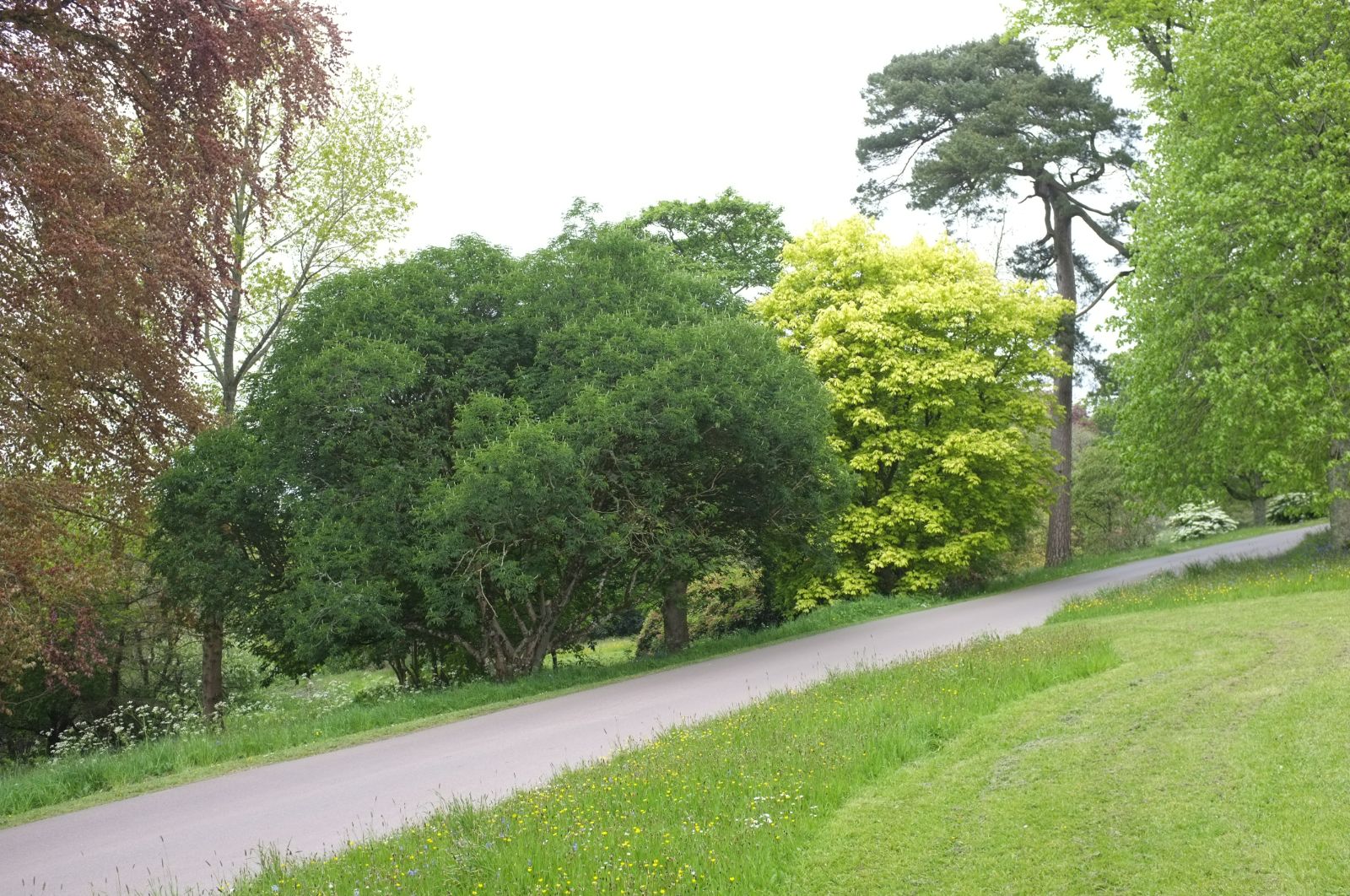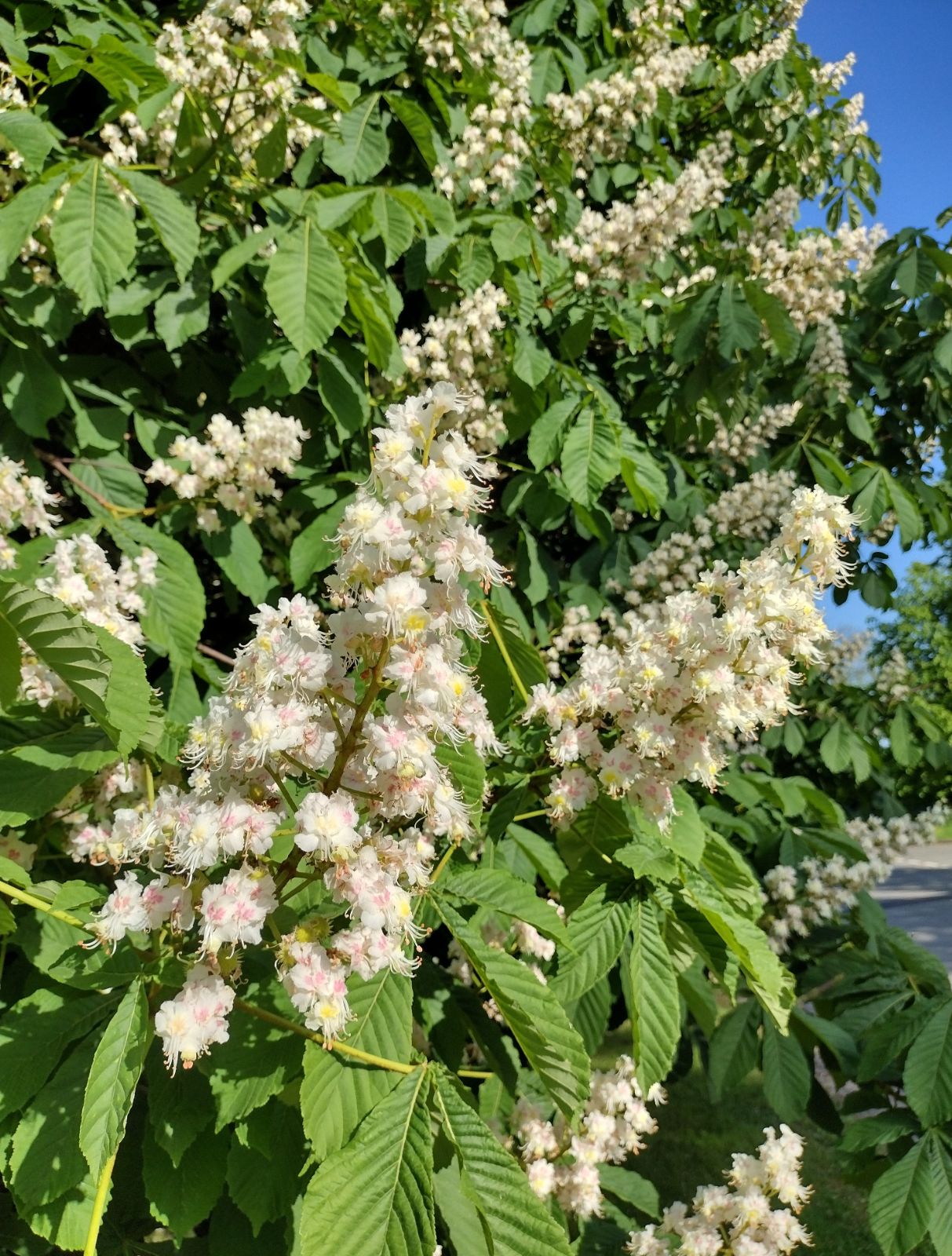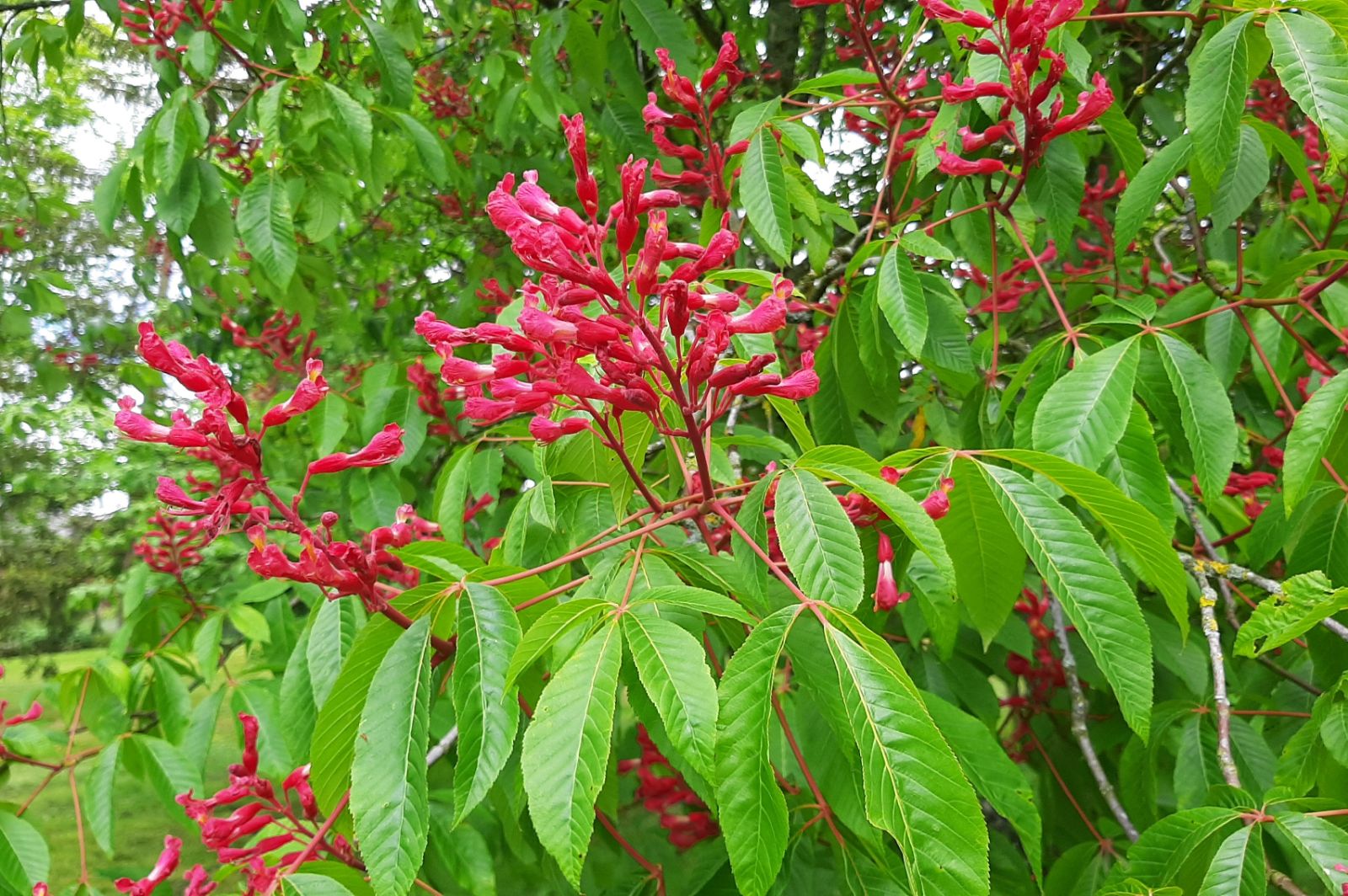Aesculus
Credits
Article from Bean's Trees and Shrubs Hardy in the British Isles
Article from New Trees by John Grimshaw & Ross Bayton
Recommended citation
'Aesculus' from the website Trees and Shrubs Online (treesandshrubsonline.
Family
- Sapindaceae (formerly Hippocastanaceae)
Common Names
- Buckeyes
- Horse Chestnuts
Species in genus
- Aesculus × bushii
- Aesculus californica
- Aesculus × carnea
- Aesculus chinensis
- Aesculus + dallimorei
- Aesculus flava
- Aesculus glabra
- Aesculus glabrescens
- Aesculus glaucescens
- Aesculus hippocastanum
- Aesculus indica
- Aesculus × marylandica
- Aesculus × mutabilis
- Aesculus × neglecta
- Aesculus octandra
- Aesculus parviflora
- Aesculus pavia
- Aesculus splendens
- Aesculus sylvatica
- Aesculus turbinata
Aesculus comprises 13–15 species, most of which occur in eastern North America and eastern Asia, with a single species in Europe and two in the greater California region (Forest et al. 2001). They are small shrubs to large trees with grey to brown, smooth or scaly bark. Winter buds are large and often sticky and resinous. The leaves are deciduous, opposite and palmate with 5–11 leaflets. The leaflets are thin or somewhat leathery, with crenate to serrate (rarely entire) margins, and may be glab rous or tomentose. Inflorescences are terminal panicles of varying size and shape. The flowers have pedicels 0.2–1.5 cm long; the campanulate or tubular calyx is white, yellow or red, with five lobes, though the depth of the lobing varies considerably; there are four to five petals, white or yellow to red; (five to) six to eight stamens, that are exserted or included, anthers yellow, orange or reddish, filaments white. The fruit is a dehiscent capsule with a smooth, scaly or spiny surface; the seeds, one to three (to six), are brown with a pale-coloured hilum of varying size (Hardin 1957a, 1957c). Hybridisation is common in Aesculus (Hardin 1957b) and particular care should therefore be taken when identifying seed-grown trees.
Aesculus are greatly appreciated as flowering trees and shrubs, and A. hippocastanum is an essential feature of the European treescape. Sadly though, in the past few years it has been simultaneously ravaged by two scourges. Most widespread is the Horse Chestnut Leaf Miner Cameraria ohridella, a moth whose larvae feed within the leaf tissue, causing extensive damage and early defoliation of the trees. While unsightly, the damage seems principally to occur late enough in the season not to affect the growth of the tree too greatly. The moth has spread through Europe at a rate of 40–60 km per year since appearing in Austria in 1989. It was first noted in the United Kingdom in 2002, but is now well established across much of England. It seems (at present) that A. hippocastanum and A. turbinata are worst affected, with the large eastern North American species being also susceptible. The Asian species, and A. californica and A. parviflora, are apparently resistant (Forest Research 2008a). The frequency of bleeding cankers on A. hippocastanum caused by Pseudomonas syringae pathovar. aesculi has also increased rapidly in recent years in Europe, causing crown dieback in severely affected trees, and unsightly weeping from the trunk. There is no known cure, beyond pruning out infected areas if this is feasible. Webber (2008) provides useful online information. The extent to which other species are affected is not yet known.
The genus is promiscuous and numerous hybrids are known – two are described below – although many of these are collector’s items only. A commercially important recent introduction is Aesculus ‘Autumn Splendor’, selected at the University of Minnesota Landscape Arboretum in 1980. This has been assigned to A. ×arnoldiana, but Dirr (1998) suggests that it is a selection of A. glabra. As the name implies it has excellent dark red autumn coloration, but also good yellow inflorescences.
An Aesculus has been introduced to both Europe and North America from northern Vietnam, under the name A. wangii. This name has never been validly published, and the taxon may be only a variant of A. assamica (Turland & Xia 2005). It is said to be very ornamental, with large narrow candle-like inflorescences (P. Wharton, pers. comm. 2007, Wynn-Jones 2008). At present it is represented in cultivation only by young trees, but it seems to be flourishing in a range of gardens. The best specimen noted is at Ness Botanic Gardens, where it is a vigorous, well-branched 3–4 m tall.
Bean’s Trees and Shrubs
Aesculus
Horse-chestnut, Buckeye
Deciduous trees and large shrubs found in all three northern continents. Leaves opposite, composed normally of five or seven leaflets (occasionally three or nine) radiating from the end of a long, slender stalk. Flowers borne in often large panicles at the end of the current season’s growth; petals four or five. Fruits sometimes prickly, sometimes smooth, containing one or two large seeds. Several of the following species are commonly known under the generic name of Pavia, the distinguishing characters being smooth fruits and four petals, as contrasted with the prickly fruits and five petals of true Aesculus. As in neither case are the characters invariably coexistent, the name Pavia has been dropped.
Few groups of woody plants are at once so well marked and so handsome as this. They all thrive well in the southern half of England, and most are hardy enough to succeed in any part of the country. All of them like a good deep soil, well drained but moist, and are easy to cultivate and transplant. For the multiplication of the species seeds are decidedly the best, but the hybrids and varieties of garden origin have to be propagated by budding. The common horse-chestnut is commonly used as a stock for all species, even such a small one as A. pavia, the result of which is an ungainly union of stock and scion and frequent ill-health. It may be used for A. × carnea (although that comes largely true from seed), and for its own numerous varieties, but for the other and smaller hybrids A. flava or A. glabra should be used as a stock. It should be mentioned that the buds selected are not those in the axils of the leaves, but the small, crowded buds at the base of the shoot nearest the old wood, which in ordinary circumstances remain dormant. Seeds of all the species should be planted as soon as they fall, and it is necessary to cover them only with about their own depth of soil. Kept dry during the winter, they lose much or sometimes all of their vitality.
In addition to the hybrids described below many others of natural origin in N. America have been identified, such as A. × mississippiensis Sarg. and A. × bushii Schneid. These hybrids are very confusing and difficult to distinguish and of little importance horticulturally.
From the Supplement (Vol.V)
The most important treatment of the taxonomy of Aesculus is that provided by James W. Hardin in ‘Studies in Hippocastanaceae’: Part II (Taxonomy of American species), Brittonia, Vol. 9, pp. 173–95 (1957); Part IV (Hybridisation), Rhodora, Vol. 59, pp. 185–203 (1957); Part V (Old World Species), Brittonia, Vol. 12, pp. 26–38 (1960).
For propagation see: P. McMillan Browse, ‘Propagation of the Hardy Horse Chestnuts and Buckeyes’, The Plantsman, Vol. 4, pp. 150–64 (1982). And for a general survey: David Wright, ‘Aesculus in the Garden’, The Plantsman, Vol. 6, pp. 228–47 (1985).





